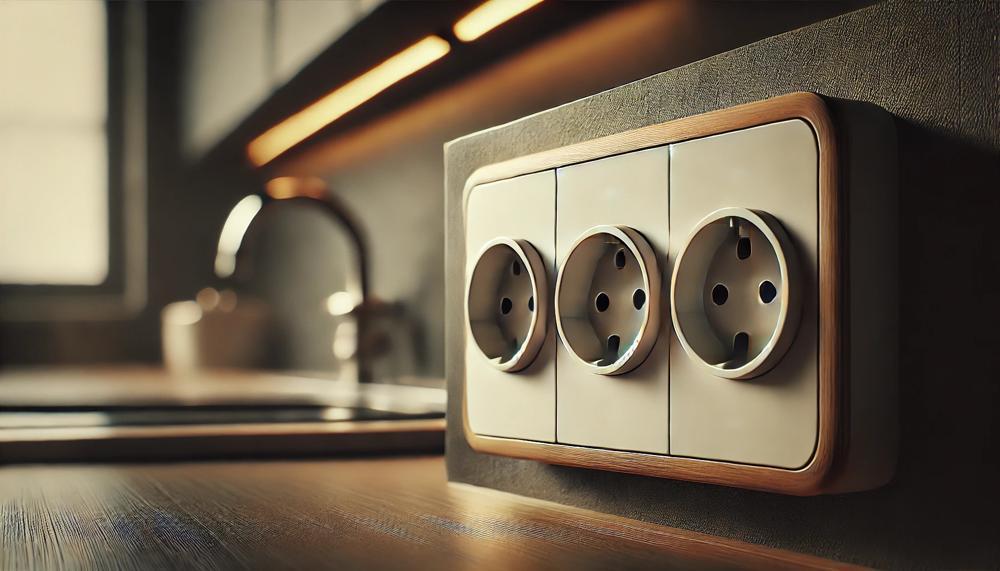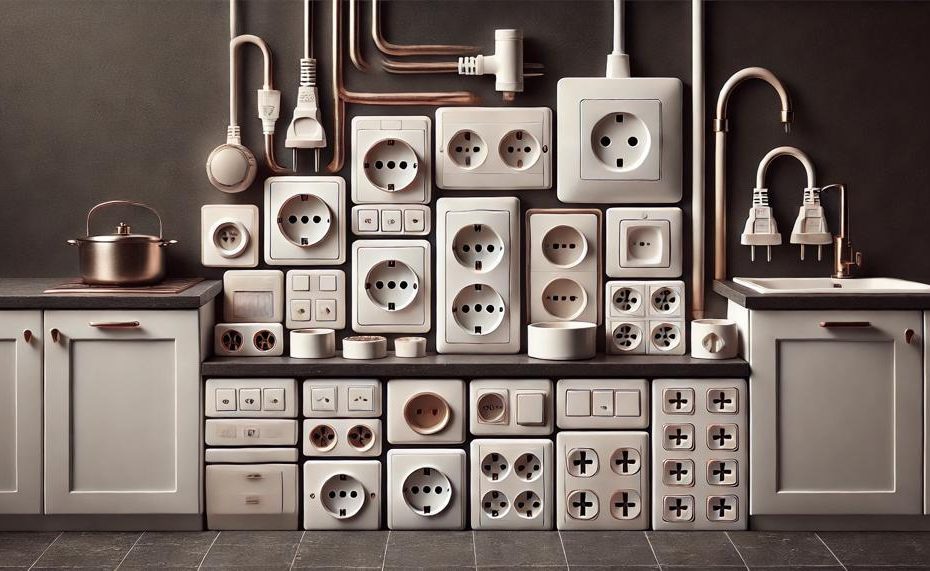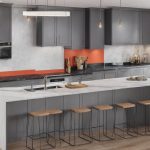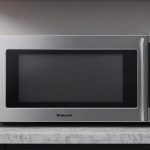Hiding plug sockets in the kitchen can transform your space into a sleek, seamless haven where functionality meets style. Whether you’re looking to create a minimalist aesthetic or simply reduce visual clutter, there are plenty of creative solutions to keep those unsightly sockets out of sight.
From innovative placements to clever disguises, making your kitchen look effortlessly chic has never been easier.
Contents
Key Takeaways:

- Kitchen Island Integration: Placing outlets in the island keeps them accessible and maintains a clean look.
- Countertop Edges: Install outlets on the sides of counters, hidden by appliances or cleverly designed covers.
- Custom Tile Plate Covers: Match your outlets to your backsplash for a seamless design.
- Hidden Compartments: Use stylish shelves or compartments to conceal outlets while keeping them functional.
- Simple Solutions for Older Kitchens: Start with easy fixes before considering more extensive renovations.
By using these strategies, you can ensure that your kitchen remains both practical and beautiful, with no visible lines to disrupt your design flow. Let’s explore these solutions in more detail and discover the perfect way to hide those plug sockets in your kitchen.
How to Hide Plug Sockets in Kitchen?
There are several ways to hide plug sockets in your kitchen for a seamless and uncluttered look:
-
Match Outlets to Your Kitchen Surfaces: You can match the color or material of a socket to your splashback, cabinet, or worktop. This means the sockets are still within easy reach but are better camouflaged.
-
Colored Receptacles: Manufacturers are now offering more choices beyond the standard white, beige, and black receptacles. You can find a wide range of colors online that will blend in more seamlessly with your wall, cabinet, or backsplash.
-
Under Cabinet Power Strip: If you are remodeling or designing a kitchen, consider installing power strips underneath your upper cabinets. This is one of the most convenient and affordable ways to eliminate visible outlets in your walls or countertops.
-
Pop-up Outlets: Keep your backsplash receptacle-free with countertop pop-up outlets that are hidden when not in use.
-
Place Outlets Under Counter Overhangs: This is another clever way to hide your kitchen outlets.
Remember, while aesthetics are important, safety should always be your top priority when dealing with electrical installations. Always consult with a professional electrician before making any changes to your kitchen's electrical setup.
Why should you cover kitchen outlets?
Leaving kitchen outlets uncovered can lead to several hazards, making it crucial to cover them for safety and aesthetics.
| Potential Hazards | Description | Reasons for Covering |
|---|---|---|
| Electrical Overload | Plugging in multiple high-power appliances can overload sockets, causing circuits to trip or, in worst cases, fires. | Outlet covers help organize usage, preventing overloading by guiding appropriate appliance placement. |
| Water Exposure | Water from cooking or cleaning can seep into uncovered outlets, leading to short circuits and possible electrical shock. | Covering outlets protects them from splashes, reducing the risk of electrical accidents. |
| Clutter and Tripping Hazards | Exposed outlets often lead to trailing cables and clutter, increasing the risk of trips and falls. | Concealing outlets encourages a tidier kitchen setup, minimizing the risk of accidents from tangled cords. |
| Child Safety | Uncovered outlets are tempting for children, who might insert objects, risking electrocution. | Outlet covers provide a barrier, deterring children from accessing dangerous electrical points. |
| Fire Risk | Improperly used or overloaded outlets can cause sparks and fires. | Covering and correctly using outlets helps manage electrical loads and reduce fire hazards. |
How can I hide my electrical outlets in the kitchen?
Concealing electrical outlets in the kitchen can be done creatively without compromising safety. Here are several innovative methods:
| Method | Description | Example/Link |
| White Outlets | Blend seamlessly with light-colored backsplashes or walls, making them less noticeable. | N/A |
| Outlet Covers | Affordable and simple solution, allowing easy access when needed. These covers can match the kitchen decor. | Outlet Covers |
| Custom Covers | Use decorative tiles or mosaic pieces to cover outlets, adding a touch of elegance. | N/A |
| Camouflage Outlets | Designed to blend with the surrounding backsplash or wall, available in various styles and finishes. | Camouflage Outlets |
| Under-Cabinet Power Strips | Provide hidden outlets and convenient access for appliances on the countertop. | Under-Cabinet Power Strips |
| Pop-Up Outlets | Installed in countertops or islands, they can be raised with a touch and remain hidden when not in use. | Pop-Up Outlets |
| Built-In Wall Sockets | Match the backsplash design for a seamless look while providing easy access to power sources. | N/A |
| Higher Placement | Moving outlets higher up on the wall or under cabinets to make them less noticeable. | N/A |
| Retractable Outlet Systems | Innovative solutions that can be hidden away when not in use, perfect for minimizing exposed outlets and cords. | Retractable Outlet Systems |
| Wireless Charging Pads | Eliminate the need for visible outlets entirely by using wireless charging pads integrated into countertops. | Wireless Charging Pads |
| Under-Cabinet Lighting | Combines lighting with hidden outlets, reducing clutter and maintaining a clean look. | Under-Cabinet Lighting |
Conclusion
Transforming your kitchen into a sleek, seamless space is easier than you might think with these ingenious ways to hide plug sockets. By integrating outlets into your kitchen island, you can maintain a clean look while keeping them accessible. Placing outlets on countertop edges allows them to be hidden by appliances or cleverly designed covers. Matching outlet covers to your backsplash with custom tile plate covers provides a seamless design that blends effortlessly with your decor.
Stylish hidden compartments or shelves can conceal outlets while still keeping them functional, perfect for those who want both form and function. For older kitchens, starting with simple solutions can make a significant difference before considering more extensive renovations.
Covering kitchen outlets is not just about aesthetics; it’s also a crucial safety measure. Exposed outlets pose risks like electrical overload, water exposure, clutter, and child safety hazards. Properly concealing and organizing your outlets can prevent accidents, reduce fire risks, and create a safer environment for your family.
By implementing these strategies, you ensure your kitchen remains both practical and beautiful, free from visual clutter and safety hazards.





